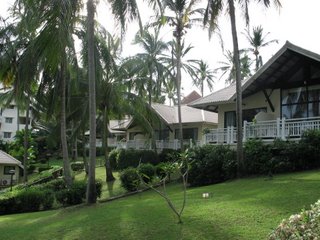There is an increasing tendency in Australia to reduce the usage of SO2 (Preservative 220) as much as possible due to concerns about allergic reactions to the chemical by consumers.
The Australian Wine Research Institute (AWRI) is the Australian grape and wine industry’s research organization which supports the grape and wine industry through research, practical solutions and knowledge transfer.
They have recently 'revisited' sulphur dioxide use because their "problem-solving" service has recently seen a number of wine samples submitted with issues apparently related to insufficient use of the preservative.
These samples have presented with a range of ‘symptoms', including sensory deterioration, premature oxidation, microbial spoilage and high concentrations of volatile acidity (VA).
All have been traced back to reveal insufficient SO2 at bottling as a major contributing factor.
So to recap, sulphur dioxide is an extremely effective antioxidant and antimicrobial agent when added in very small amounts to wine. The maximum allowable in Australia for a dry wines is 250mg/L although I doubt this level is ever reached.
It is introduced into wine a number of times during processing generally in the form of potassium metabisulphite (KMS) which produces approximately half its weight as SO2.
In the wine, two forms of SO2 then exist ie.bound and free. It is the free that 'does the work'. Within the free it is the molecular sulphur that is the 'active agent'.
The amount of SO2 in the free form and its effectiveness ie. molecular sulphur content, depends on the pH of the wine. The higher the pH, the less SO2 will be in the useful free form AND the less effective this free SO2 will be.
 |
| Free SO2 levels recommended by Rankine |
So with all this well documented and established knowledge why are some winemakers running into trouble?
There are many considerations to take into account when assessing the correct SO2 levels. These include if a wine is intended for short, medium or long term storage, wine clarity and dissolved oxygen pickup at various stages of wine production particularly at bottling. The latter two increase the bound and reduce the free levels of SO2.
With this trend towards the lowest possible additions, it seems multiple small additions of SO2 rather than one equivalent large addition could result in the concentration of free SO2 never reaching a level which produces the desired antioxidant or antimicrobial effect.
Larger less frequent SO2 additions, yielding greater concentrations of free SO2, are therefore considered much more effective in achieving the desired antioxidant and antimicrobial effects.
The AWRI reports: It is apparent that many wines submitted for problem solving investigation are those to which several small SO2 additions have been made, and many of these wines have a comparatively high ratio of bound to free SO2, i.e. the free SO2 concentration being 25% or less of the concentration of total SO2. In most cases this phenomenon is apparently due to products of oxidation and microbiological activity resulting from the low free SO2 concentrations, acting to bind a large proportion of the SO2 that is present.
Measuring free SO2 on a commercial scale requires expensive equipment or a complicated laboratory set up.
There are test kits for the small wine maker but I have found these to be expensive, inaccurate and unreliable.
Some time ago I came across a test system based on the Rankine method in the USA for $100 and brought one home with me. It can be a bit fiddly but I found this to be one of the better wine making investments I have made.
The electric pump required a step down transformer (which we have for our other USA appliances) to cope with our 240V. The test chemicals were easily acquired locally eg. from ANPROS
Performed with care and measuring accuracy, testing using this set up will definitely indicate when free SO2 is present in the wine and, with a simple calculation, the approximate amount.
Now whether this amount is accurate is any one's guess as I have no way of comparing it to a result from an established testing method.
But I have to say so far I have come across none of the low sulphur problems stated above with the white that has been bottled or the reds which are still in the tank.




















No comments:
Post a Comment